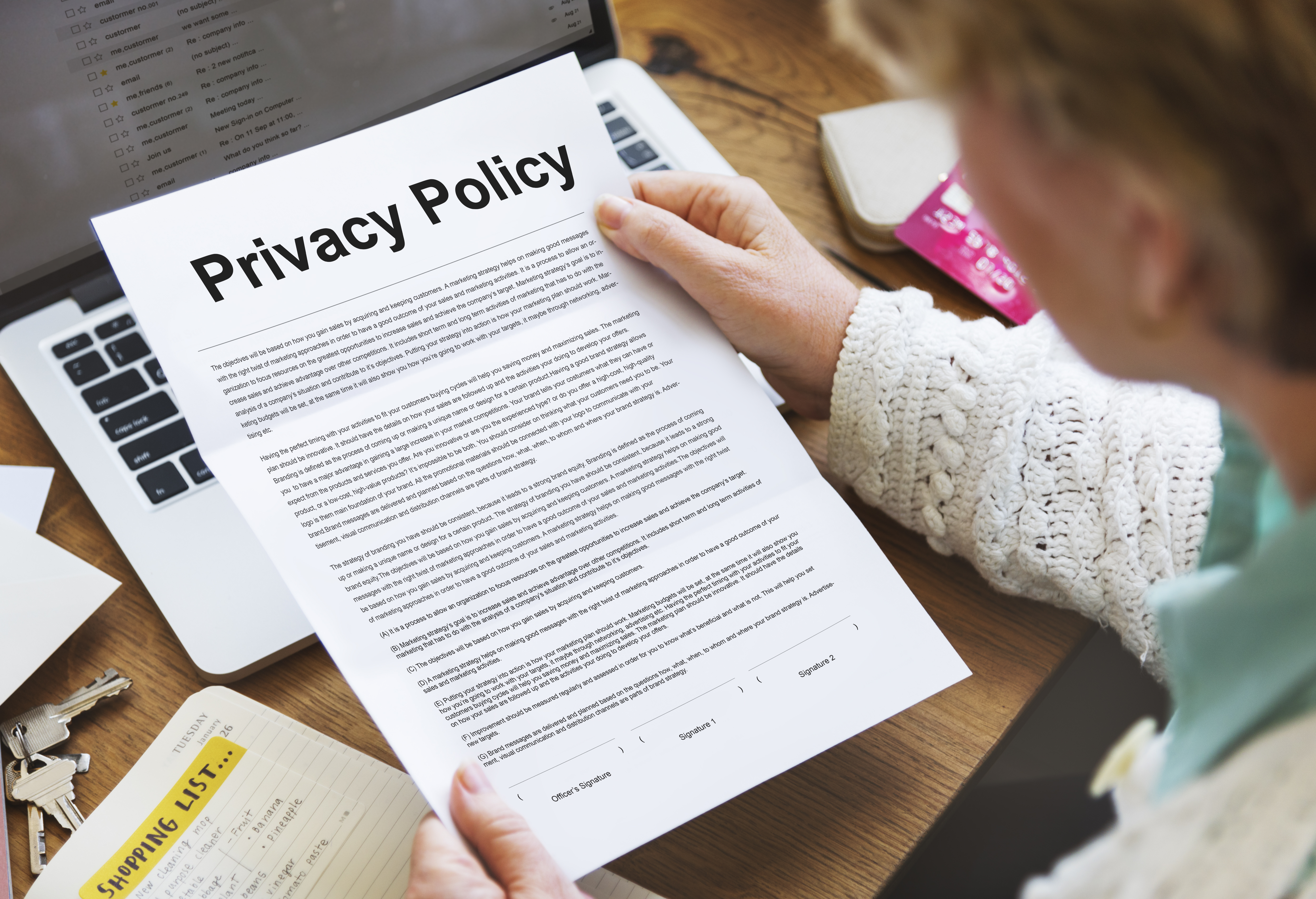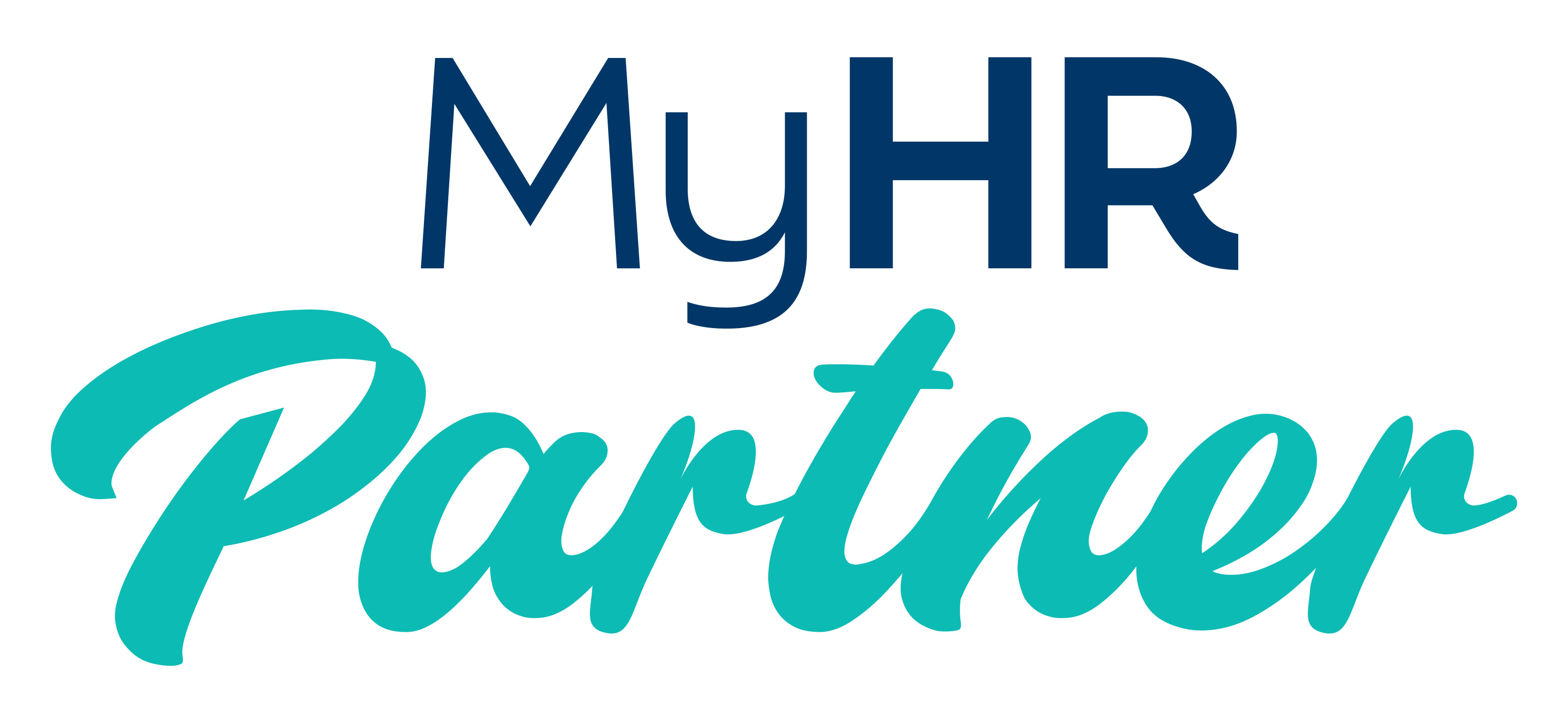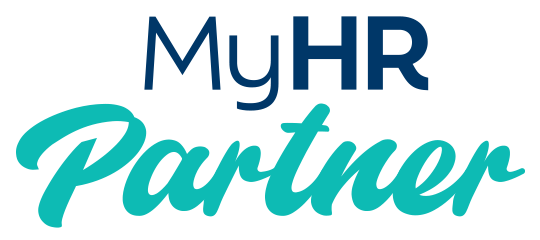Privacy Policy
Privacy Policy

Who We Are
Our website address is: https://myhrp.com.au/
My HR Partner Privacy Policy
Last Modified: November 2022
We at My HR Partner (My HR Partner and our affiliates) are committed to protecting your privacy.
This Privacy Policy applies to the information and data collected by My HR Partner, including the information collected
on our website or through other channels as described below. It also describes your choices regarding use, access
and correction of your personal information.
We periodically update this Privacy Policy and will post any and all privacy policy changes here.
If you have any questions about this Privacy Policy or our treatment of the information you provide us,
please email us at [email protected]
We at My HR Partner (My HR Partner
and our affiliates) are committed to protecting your privacy. This Privacy Policy applies to the information and data collected by My HR Partner, including the information collected on our website or through other channels as described
below. It also describes your choices
regarding use, access and correction
of your personal information.
We periodically update this Privacy Policy and will post any and all privacy policy changes here. If you have any questions about this Privacy Policy or our treatment of the information you provide us, please email us at [email protected]
Information We Collect
Information We Collect
How We Use Information We Collect
How we Share Information we Collect
Cookies and Similar Technologies
How to Access & Control Your Personal Data
How We Use Information We Collect
How we Share Information we Collect
Cookies and Similar Technologies
How to Access & Control Your Personal Data
1. Information We Collect
1. Information We Collect
When you visit our site you are free to explore without providing any Personal Information about yourself. When you visit the website or subscribe to our email newsletter, we request that you provide Personal Information about yourself, and we collect Navigational Information.
Personal Information
This refers to any information that you voluntarily submit to us and that identifies you personally, including contact information, such as your name, e-mail address, company name, address, phone number, and other information about yourself or your business. Personal Information can also include information about any transactions, both free and paid, that you enter into on the Websites, and information about you that is available on the internet, such as from: Facebook, LinkedIn, Twitter and Google, or publicly available information that we acquire from service providers.
Personal Information includes Navigational Information or Payment Information where such information can directly or indirectly identify an individual. Navigational information refers to information about your computer and your visits to the Site such as your IP address, geographical location, browser type, referral source, length of visit and pages viewed. Please see the “Use of Navigation Information” section below. When you visit the Site, we automatically collect certain information about your device, including information about your web browser, IP address, time zone, and some of the cookies that are installed on your device.
Additionally, as you browse the Site, we collect information about the individual web pages or products that you view, what websites or search terms referred you to the Site, and information about how you interact with the Site. We refer to this automatically-collected information as “Device Information”.
We collect Device Information using the following technologies: – “Cookies” are data files that are placed on your device or computer and often include an anonymous unique identifier. For more information about cookies, and how to disable cookies, visit http://www.allaboutcookies.org. – “Log files” track actions occurring on the Site, and collect data including your IP address, browser type, Internet service provider, referring/exit pages, and date/time stamps. – “Web beacons”, “tags”, and “pixels” are electronic files used to record information about how you browse the Site. Additionally, when you make a purchase or attempt to make a purchase through the Site, we collect certain information from you, including your name, billing address, shipping address, payment information (including credit card numbers, email address, and phone number.) We refer to this information as “Order Information”.
When we talk about “Personal Information” in this Privacy Policy, we are talking both about Device Information and Order Information.
How do we use your personal information?
We use the Order Information that we collect generally to fulfil any orders placed through the Site (including processing your payment information, arranging for shipping, and providing you with invoices and/or order confirmations). Additionally, we use this Order Information to: – Communicate with you; – Screen our orders for potential risk or fraud; and – When in line with the preferences you have shared with us, provide you with information or advertising relating to our products or services.
We use the Device Information that we collect to help us screen for potential risk and fraud (in particular, your IP address), and more generally to improve and optimize our Site (for example, by generating analytics about how our customers browse and interact with the Site, and to assess the success of our marketing and advertising campaigns).
2. How We Use Information We Collect
Compliance with Our Privacy Policy
2. How We Use Information We Collect
Compliance with Our Privacy Policy
We use the information we collect only in compliance with this Privacy Policy.
Customer Testimonials and Comments
We post customer testimonials and comments on our Websites, which may contain Personal Information. Each customer’s name and testimonial has been freely provided and accessed through Facebook or Google Reviews.
Social Media Features
Our Websites include Social Media Features, such as the Facebook Like button and Widgets, such as the Share This button or interactive mini-programs that run on our site. These features may collect your IP address, which page you are visiting on our site, and may set a cookie to enable the feature to function properly. Social Media Features and Widgets are either hosted by a third party or hosted directly on our Shopify site. This Privacy Policy does not apply to these features. Your interactions with these features are governed by the privacy policy and other policies of the companies providing them.
External Websites
Our Website provides links to other websites. We do not control, and are not responsible for, the content or practices of these other websites. Our provision of such links does not constitute our endorsement of these other websites, their content, their owners, or their practices. This Privacy Policy does not apply to these other websites, which are subject to any privacy and other policies they may have.
3. How we Share Information we Collect
Sharing your personal Information
3. How we Share Information we Collect
Sharing your personal Information
We share your Personal Information with third parties to help us use your Personal Information, as described above. For example, we use Google Analytics to help us understand how our customers use the Site — you can read more about how Google uses your Personal Information here:
https://www.google.com/intl/en/policies/privacy/ You can also opt-out of Google Analytics here: https://tools.google.com/dlpage/gaoptout
Finally, we may also share your Personal Information to comply with applicable laws and regulations, to respond to a subpoena, search warrant or other lawful request for information we receive, or to otherwise protect our rights.
4. Cookies and Similar Technologies
Cookies
4. Cookies and Similar Technologies
Cookies
My HR Partner and its partners use cookies or similar technologies (such as web beacons) to analyse trends, administer the website, track users’ movements around the website, and to gather demographic information about our user base as a whole.
Behavioural advertising
As described above, we use your Personal Information to provide you with targeted advertisements or marketing communications we believe may be of interest to you. For more information about how targeted advertising works, you can visit the Network Advertising Initiative’s (“NAI”) educational page at
http://www.networkadvertising.org/understanding-online-advertising/how-does-it-work
You can opt out of targeted advertising by using the links below:
Facebook: https://www.facebook.com/settings/?tab=ads
Google: https://www.google.com/settings/ads/anonymous
Additionally, you can opt out of some of these services by visiting the Digital Advertising Alliance’s opt-out portal at: http://optout.aboutads.info/
Do not track
Please note that we do not alter our Site’s data collection and use practices when we see a Do Not Track signal from your browser.
Third Party Tracking Technologies
The use of cookies and web beacons by any tracking utility company is not covered by our Privacy Policy or Cookie Policy.
5. How to Access & Control Your Personal Data
Reviewing, Correcting and Removing Your Personal Information
5. How to Access & Control Your Personal Data
Reviewing, Correcting and Removing Your Personal Information
Your rights
If you are a European resident, you have the right to access personal information we hold about you and to ask that your personal information be corrected, updated, or deleted. If you would like to exercise this right, please contact us through the contact information below. Additionally, if you are a European resident we note that we are processing your information in order to fulfil contracts we might have with you (for example if you make an order through the Site), or otherwise to pursue our legitimate business interests listed above. Additionally, please note that your information will be transferred outside of Europe, including to Canada and the United States.
Data retention
When you place an order through the Site, we will maintain your Order Information for our records unless and until you ask us to delete this information.
Changes
We may update this privacy policy from time to time in order to reflect, for example, changes to our practices or for other operational, legal or regulatory reasons.
Minors
The Site is not intended for individuals under the age of 16.
To Unsubscribe From Our Communications You may unsubscribe from our marketing communications by clicking on the “unsubscribe” link located on the bottom of our e-mails, updating your communication preferences, or by sending us email us at [email protected]
Contact us
For more information about our privacy practices, if you have questions, or if you would like to make a complaint, please contact us by email at [email protected] or by mail using the details provided below:
My HR Partner PO Box 1079 Coolangatta Qld 4225
Our Latest Blog Post

Planning Employee Leave for the Year
Annual Leave Planning for the 2025 Christmas/New Year shutdown: A Guide for Australian Businesses
It’s just over 13 weeks until Christmas.
It's a good time to start planning for the Christmas/New Year period if you shutdown over that time. Determine the specific dates your business will be closed, and communicate this to your employees and clients.
Effective annual leave planning is important for a healthy and productive workplace.
As your trusted HR partner, we’ve put together a guide to help you manage annual leave proactively especially when planning for your Christmas/New Year shutdown.
Plan Ahead for the Christmas/New Year Shutdown:
If your business closes over the Christmas/ New Year period, you need to provide employees with the appropriate written notice as specified in their Award. You need to do this even if you have the information in an employment contract because you have to inform your employees of the dates each year.
It’s also wise to check if employees have enough leave to cover this period. If they don’t, you can explore options like agreeing in writing to take a period of unpaid leave or allowing them to take annual leave in advance. (Regularly checking leave balances when employees apply for leave throughout the year can be good too)
Just be sure to get a written agreement for any leave taken in advance (that puts an employee into a negative balance), outlining that they will repay the value if their employment ends before the leave is accrued. It's also important to understand that you can't force an employee to take unpaid leave, so making sure you come to a written agreement is important.
If you have an employee that is hired after the initial notice of the shutdown has been given to your team, you must give that employee notice as soon as reasonably possible (for example, it's a great idea to let them know as part of their induction, or even in the recruitment process).
Your employees are entitled to be paid for any public holidays during the shutdown period that fall on days they would normally work. This applies even if they have agreed to take a period of unpaid leave.
Why Strategic Leave Planning is Crucial for Your Business
A well-thought-out leave plan benefits both your business and your employees. Here’s why it’s essential:
Avoid Disruptions and Staffing Shortages: Last-minute leave requests can throw a spanner in the works. Planning ahead ensures you have adequate coverage, preventing disruptions to productivity and customer service.
Boost Employee Wellbeing: Regular breaks are vital for preventing burnout and keeping your team engaged and productive. Encouraging planned time off shows you value their wellbeing.
Ensure Compliance: As an employer in Australia, you have obligations under the National Employment Standards (NES) to provide annual leave. Proper planning helps you meet these requirements and ensures your payroll system accurately accrues leave entitlements.
Practical Strategies for Proactive Leave Management
Ready to take control of your leave planning? Here’s our best HR advice for 2025:
Create a Centralised Leave Calendar: A shared calendar, whether it’s a physical whiteboard or a digital tool, provides a clear overview of public holidays, peak periods, and approved leave. This helps employees choose dates that don't clash with critical business operations or when someone else is on leave.
Communicate Policies Early and Clearly: Your HR policy handbook should clearly outline leave policies, including notice periods, any restrictions during busy seasons, and the process for submitting leave requests. This transparency helps prevent misunderstandings and sets clear expectations.
Manage Peak Periods Effectively: Identify the busiest times of the year for your business and plan your staffing accordingly. For example, if you're in the retail sector, it’s best to avoid approving leave during peak holiday shopping seasons.
Be Fair and Consistent: Maintain a transparent and fair process for approving leave requests. Apply policies consistently to all employees to avoid any perception of favouritism. If your policy limits how many people can be on leave at one time, ensure it's applied fairly across the board.
Tools to Streamline Leave Management
You don’t have to manage leave manually. Here are some tools that can simplify the process:
HR and Rostering Software: Cloud-based HR and rostering systems are excellent for tracking and managing leave requests and entitlements automatically.
Spreadsheets: For smaller teams, a well-organised spreadsheet can be a simple and cost-effective way to track leave.
Whiteboard: A leave roster could be displayed in the office on a Whiteboard.
Automated Alerts: Many systems allow you to run regular reports and set up reminders for employees with high leave balances, encouraging them to book some time off.
A Quick Refresher on Annual Leave Entitlements in Australia
The National Employment Standards give details of what annual leave employees are entitled to:
Four weeks of paid annual leave per year for full-time employees.
Four weeks of paid annual leave (pro-rata) for part-time employees, based on their contracted hours.
Annual leave loading for employees covered by specific awards or enterprise agreements - your Award or Agreement will set out the entitlements.
It’s crucial to stay up-to-date with your Award conditions to ensure you remain compliant with all leave loading and Fair Work requirements.
Final Thoughts
Strategic leave planning is all about finding the right balance—ensuring your team gets the rest they need while keeping your business operating smoothly. By adopting these practices, you can create a win-win situation for both your employees and your bottom line.
If you’re struggling to manage leave or other HR challenges, My HR Partner is here to help. We specialise in simplifying people management for businesses across Australia, allowing you to focus on what you do best.
Need expert support with your HR? Contact us today to learn how we can tailor a solution for your business!
We provide HR advice and support. We have trusted partners to assist with any employment law issues
outside of our scope.
More info

Get HR Advice from our HR expert
Our Latest Blog Post

Planning Employee Leave for the Year
Annual Leave Planning for the 2025 Christmas/New Year shutdown: A Guide for Australian Businesses
It’s just over 13 weeks until Christmas.
It's a good time to start planning for the Christmas/New Year period if you shutdown over that time. Determine the specific dates your business will be closed, and communicate this to your employees and clients.
Effective annual leave planning is important for a healthy and productive workplace.
As your trusted HR partner, we’ve put together a guide to help you manage annual leave proactively especially when planning for your Christmas/New Year shutdown.
Plan Ahead for the Christmas/New Year Shutdown:
If your business closes over the Christmas/ New Year period, you need to provide employees with the appropriate written notice as specified in their Award. You need to do this even if you have the information in an employment contract because you have to inform your employees of the dates each year.
It’s also wise to check if employees have enough leave to cover this period. If they don’t, you can explore options like agreeing in writing to take a period of unpaid leave or allowing them to take annual leave in advance. (Regularly checking leave balances when employees apply for leave throughout the year can be good too)
Just be sure to get a written agreement for any leave taken in advance (that puts an employee into a negative balance), outlining that they will repay the value if their employment ends before the leave is accrued. It's also important to understand that you can't force an employee to take unpaid leave, so making sure you come to a written agreement is important.
If you have an employee that is hired after the initial notice of the shutdown has been given to your team, you must give that employee notice as soon as reasonably possible (for example, it's a great idea to let them know as part of their induction, or even in the recruitment process).
Your employees are entitled to be paid for any public holidays during the shutdown period that fall on days they would normally work. This applies even if they have agreed to take a period of unpaid leave.
Why Strategic Leave Planning is Crucial for Your Business
A well-thought-out leave plan benefits both your business and your employees. Here’s why it’s essential:
Avoid Disruptions and Staffing Shortages: Last-minute leave requests can throw a spanner in the works. Planning ahead ensures you have adequate coverage, preventing disruptions to productivity and customer service.
Boost Employee Wellbeing: Regular breaks are vital for preventing burnout and keeping your team engaged and productive. Encouraging planned time off shows you value their wellbeing.
Ensure Compliance: As an employer in Australia, you have obligations under the National Employment Standards (NES) to provide annual leave. Proper planning helps you meet these requirements and ensures your payroll system accurately accrues leave entitlements.
Practical Strategies for Proactive Leave Management
Ready to take control of your leave planning? Here’s our best HR advice for 2025:
Create a Centralised Leave Calendar: A shared calendar, whether it’s a physical whiteboard or a digital tool, provides a clear overview of public holidays, peak periods, and approved leave. This helps employees choose dates that don't clash with critical business operations or when someone else is on leave.
Communicate Policies Early and Clearly: Your HR policy handbook should clearly outline leave policies, including notice periods, any restrictions during busy seasons, and the process for submitting leave requests. This transparency helps prevent misunderstandings and sets clear expectations.
Manage Peak Periods Effectively: Identify the busiest times of the year for your business and plan your staffing accordingly. For example, if you're in the retail sector, it’s best to avoid approving leave during peak holiday shopping seasons.
Be Fair and Consistent: Maintain a transparent and fair process for approving leave requests. Apply policies consistently to all employees to avoid any perception of favouritism. If your policy limits how many people can be on leave at one time, ensure it's applied fairly across the board.
Tools to Streamline Leave Management
You don’t have to manage leave manually. Here are some tools that can simplify the process:
HR and Rostering Software: Cloud-based HR and rostering systems are excellent for tracking and managing leave requests and entitlements automatically.
Spreadsheets: For smaller teams, a well-organised spreadsheet can be a simple and cost-effective way to track leave.
Whiteboard: A leave roster could be displayed in the office on a Whiteboard.
Automated Alerts: Many systems allow you to run regular reports and set up reminders for employees with high leave balances, encouraging them to book some time off.
A Quick Refresher on Annual Leave Entitlements in Australia
The National Employment Standards give details of what annual leave employees are entitled to:
Four weeks of paid annual leave per year for full-time employees.
Four weeks of paid annual leave (pro-rata) for part-time employees, based on their contracted hours.
Annual leave loading for employees covered by specific awards or enterprise agreements - your Award or Agreement will set out the entitlements.
It’s crucial to stay up-to-date with your Award conditions to ensure you remain compliant with all leave loading and Fair Work requirements.
Final Thoughts
Strategic leave planning is all about finding the right balance—ensuring your team gets the rest they need while keeping your business operating smoothly. By adopting these practices, you can create a win-win situation for both your employees and your bottom line.
If you’re struggling to manage leave or other HR challenges, My HR Partner is here to help. We specialise in simplifying people management for businesses across Australia, allowing you to focus on what you do best.
Need expert support with your HR? Contact us today to learn how we can tailor a solution for your business!
We provide HR advice and support.
We have trusted partners to assist with
any employment law issues outside
of our scope.
More info
PO Box 1079
Coolangatta QLD 4225
ABN 30 644 527 015
Get HR Advice from our HR expert








